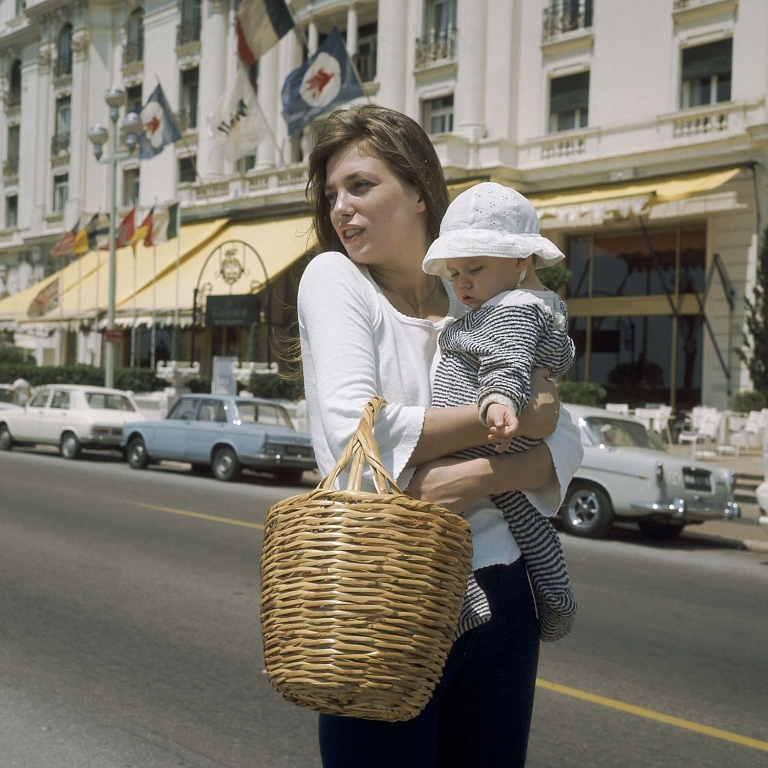The history of the Jane Birkin wicker basket—status, wealth, and more
by Macy Berendsen
Before Hermes’ iconic Birkin bag, the muse Jane Birkin was the queen of wicker baskets. As the story goes, Jane was sat next to the CEO of Hermes on an airplane where her wicker bag spilled its guts all over and in that moment, the Birkin bag was born.
The lore behind the Birkin bag is well known, but Jane carried that wicker basket long before the Birkin bag was born. Jane acquired this bag in Portugal, which is technically a fisherman’s basket, but it was perfect for a girl like Jane who carried her whole life in a bag.
Jane’s wicker basket, and her persona as a whole, has recently appealed to the younger generations on social media within the last couple of years. Jane has that “it girl” personality and style, as well as the iconic “French girl” style that has been popular.


The wicker basket has inspired other designer brands including Miu Miu, Saint Laurent, Loewe and more to create their own variations of the basket.
Although Jane was one of the people to popularize the wicker basket, its fashionably and most importantly functional history dates way back.
It’s difficult to pinpoint exactly where wicker originated from. Wicker is seen in so many cultures all over the world. The excess of raw materials helped in the creation of wicker baskets since it simplified the process of carrying, especially crops and materials, on foot. Wicker baskets meant for hauling items then turned into wicker being used for furniture and as we know, a more functional handbag.
It seems to be that the ancient Egyptians are the first recorded evidence in history to use a woven basket, but the materials made to make wicker baskets are used all over the world including the Native Americans and early Chinese civilization.
When you think of a wicker basket, I’m sure picnic comes to mind. Picnics became popular in Parisian society in the 1600’s, which were indoors, but then moved to the outdoor picnic as we know it today in the 1800’s. During this change, specialized baskets were designed and manufactured for people to carry food, drink and cutlery around outdoors.
The 1950s is when the wicker material really took off down a fashionable path. Popular brand Los Dorados marketed the wicker basket as a trendy tote perfect for beach days with different versions including ribbons, fruits, flowers and more—making it a fun summer bag that is also highly fashionable. This was part due to the fact that during World War II, the classy material of leather for handbags was rationed. Designers started turning to different materials including raffia and bamboo. In 1947, Gucci launched their version of a bamboo bag.
The 1970s is when dear Jane comes back into the picture. Jane started popularizing the wicker basket in a new function starting in the late 60s. Jane’s version of the wicker basket was the catch-all, it girl bag that had personality and fit her casual, bohemian style. It was the bag for the woman constantly on the go.
The wicker basket, which was not meant for a handbag, created the idea that women, or those carrying handbags, did not need an expensive leather bag to achieve the idealized “it girl” or “French girl” look. A wicker basket can be found at most thrift stores today, and with a little love and cleaning, it can turn into something as functional and fun as what Jane was using her wicker basket bag for.

Jane at a pro-choice demonstration in 1972 (Alain DeJean).
The contrast behind the Hermes’ Birkin bag and the original Jane wicker basket bag is an interesting one. Jane was known for a simple and laid back style, not adored with designer clothes and leather handbags. In one of my favorite television shows, Rory Gilmore is given a Birkin bag by her college boyfriend, Logan. As Rory’s grandmother states about a Birkin bag, “A Birkin bag… I’m going to remember this day.” Gilmore Girls poked fun at the Birkin bag and used it as a wealth tool to show the divide between Loreali and Rory’s simple and nonmaterialistic (for the most part) life, and Emily Gilmore’s love and admiration for this bag that rockets Rory into the wealthy society she is surrounded by.
Although the Birkin bag was meant to be a catch-all bag similar to the wicker basket Jane had on the airplane where she was discovered by the Hermes CEO, the bag is now an symbol of wealth and status. Its seem to lost it’s original charm and origins, not accessible by most people. A wicker basket, however, is a more affordable option and speak to the person on-the-go with an agenda. Jane is photographed all over with her wicker bag—at a pro-choice protest in France, during the Cannes Film Festival, at night clubs in Paris, and so much more.
The wicker basket will always be a fashion favorite, popularized by a woman who made “big bag” woman feel safe from the trends of “little bag.”

